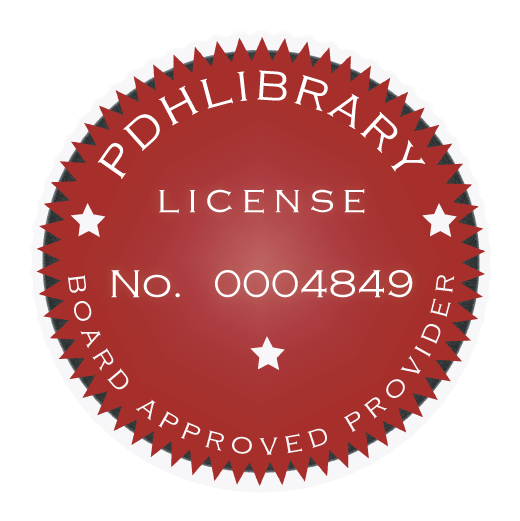Course Description
This continuing education online pdh course will introduce you to the principles and practices of wastewater collection and pumping. You will learn about preliminary sewer design issues, the hydraulic design of gravity and pressure sewers, sewer system layout, appurtenances, and structural design of sewer lines. You will be introduced to the fundamentals of pumped system design, pumping stations and equipment. You will become familiar with sewer piping and pump station components. You will also learn how to approach evaluation and rehabilitation of existing sewer systems. This course is ideal for civil engineers and other design and construction professionals looking for an introduction to the design of sanitary sewer systems.
Course Outline
1. GENERAL
2. PRELIMINARY DESIGN CONSIDERATIONS
3. HYDRAULIC DESIGN OF SEWERS
4. SEWER SYSTEM LAYOUT AND APPURTENANCES
5. STRUCTURAL DESIGN OF SEWERS
6. PUMPING STATION AND EQUIPMENT
7. PUMPING SYSTEM DESIGN
8. PIPING
9. PUMPING STATION COMPONENTS
10. EVALUATION OF EXISTING SEWER SYSTEMS
11. REHABILITATION OF EXISTING SYSTEMS
Learning Objectives
• Learn about the approach, requirements, criteria, considerations, and hydraulic calculations used in the design of gravity sewers.
• Learn about alternatives to gravity sewer systems that would require deep and expensive trench excavation, such as jacking, boring, and tunneling.
• Learn how the operation and maintenance costs of a pumping station with a forcemain, when capitalized, may offset or be less than the construction costs of a deep gravity sewer system.
• Learn how when high groundwater, unstable soil, shallow rock, or extremely adverse topography make gravity sewers, pump or ejector stations unsuitable, low pressure systems using grinder pumps with small diameter pressure sewers may be a solution.
• Learn how to calculate the average hourly wastewater flowrate in order to design a sanitary sewer system.
• Learn how to calculate extreme peak wastewater flowrates and how to size a sanitary sewer system to accommodate them.
• Learn how to design for unintended inflow and infiltration in wastewater collection systems.
• Learn about the Manning Formula and how to use it in sewer system design.
• Learn the importance of flow velocity in sewer pipes and velocity guidelines for various flow conditions that may be encountered.
• Find out about basic parameters for sewer pumping station layout.
• Learn about the different types of sewage pumps and ejectors and when they are used.
Intended Audience
This course is intended for civil engineers and other infrastructure design and construction professionals who want to learn about the basic technology, design guidelines and materials and equipment used in design and construction of wastewater collection and pumping systems for residential, industrial and commercial developments.
Course Introduction
This course will introduce you to the basic considerations in design and construction of sanitary sewer systems.
Course Summary
Upon completion of this course you will have a basic understanding of wastewater collection systems and be prepared to address sanitary sewer system issues in your professional employment.

